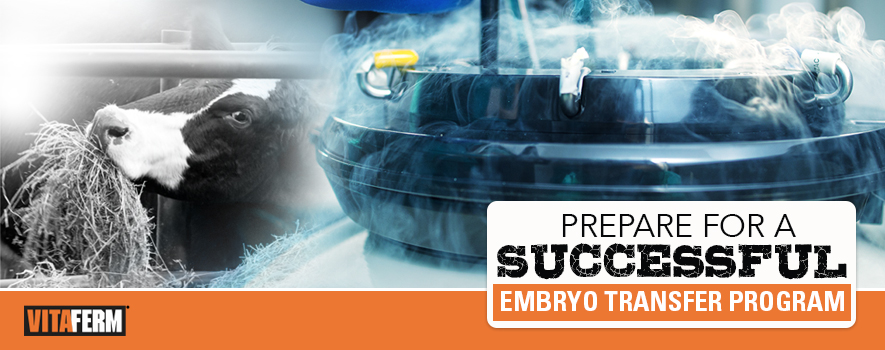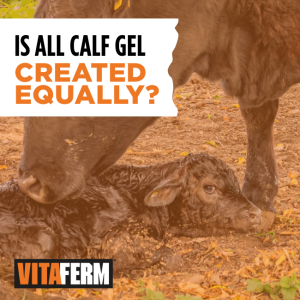
Propagating superior genetics with the use of advanced reproductive technologies requires an investment in time, labor and finances. The outcome will often result in outstanding offspring that will share genotype and phenotypic make-up of the parents. If you are going to go to the time and expense of breeding cattle using a technology like Embryo Transfer or In Vitro Fertilization, be sure to plan ahead, and take the proper steps to make sure that your investment is not wasted due to poor planning.
Samantha Graves has worked at Trans Ova in Chillicothe, Mo., for 17 years. She started in the lab and is currently in customer service. She offers timely and practical advice for any producer considering Advanced Reproductive Technology or ART work this summer.
“Proper balance of vitamins and minerals should be a top priority of any cattle operation, but especially anyone who utilizes advanced reproductive technologies. If you don’t start out with a good balance to begin with, anything else you do after that point isn’t going to matter,” Graves said. “Vitamins and minerals have a huge influence on reproductive performance in general.”
Many vitamins and minerals are deficient in the soil and forages, especially in the geographic area where many of the customers Graves works with run their cows. She said three of the most important nutrients to reproductive success are deficient in nature – selenium, zinc and phosphorus – and that is why she recommends supplementing those. Other nutrients that are vital to reproductivity include Vitamins E and A and manganese.
Graves said that a lack of selenium is detrimental because it causes issues like anemia, infertility, retained placentas and cystic ovaries. For bulls, a selenium deficiency can impair sperm motility.
“Zinc plays a dual role as it is an activator of enzymes, so an adequate amount needs to be present to balance hormone levels. Also, a zinc deficiency can lower pregnancy rates and decrease viable embryos per flush or aspiration. Nutrition is a complex puzzle. it is hard to figure out what you need in your program, but it is worth the time and investment. If you’re not sure, use a highly-fortified free-choice mineral,” Graves said.
Although Graves recommends feeding a high-quality mineral program year-round, she understands not everyone does that. However, she highly recommends those who are about to flush a donor or implant eggs, start their cows on a good mineral program at least 30 days in advance, but preferably 60 days prior to their ART service. Since nutrition is so important to the reproductive health of donor and recipient cows, the VitaFerm® Concept•Aid® line is the ideal mineral package to offer to cows pre-breeding all the way through calving for optimum reproductive health. Concept•Aid is specifically designed for reproductive success when fed 60 days pre-calving through 60 days post-breeding. It contains organic copper, zinc and manganese to ensure maximum bioavailability of nutrients to the animal, and high levels of vitamin E and selenium to promote optimized fertility. Like all VitaFerm products, its key ingredient is Amaferm®, is a prebiotic designed to enhance digestibility by amplifying the nutrient supply for maximum performance. It is research-proven to increase intake, digestion and absorption.
Another important consideration in addition to making sure both your donor and recipient cows are on a high plane of nutrition, is that they are in good condition. A donor cow should be gradually gaining and at a body condition score of 4-6. The recips can stand to be slightly thinner than the donors, but still at a BCS of 4-5.
Graves also reminds producers to eliminate as many stressors as they can prior to a flush or implant.
“The first thing to shut down when any kind of stress is caused to a cow – either a donor or a recip – is her reproductive system because she doesn’t need her reproductive system to survive. That is the first thing affected in any situation,” Graves said. “it is vital that they have the least amount of stress around collection or implanting time.”
Stressors that can impact a cow’s reproductive performance include getting sick and receiving treatments, and summer heat if it is excessive. Graves said she usually advises against any antibiotic treatments for a month prior to E.T. work, but for something like foot rot, she would allow treatment because in some cases, the stress from ailments is worse than the stress from the treatments.
Graves said heat stress can be a factor if the temperatures are excessive for long periods of time, usually 10 or more consecutive days. To combat heat stress, be sure to provide shade, ventilation and cold, running water.
Good nutrition. Proper body condition. Low stress. Those are three factors to making sure you have a successful E.T. program. You’re investing in advancing your genetics. Be sure you start with an investment in good nutrition to ensure success while propagating the next generation.


